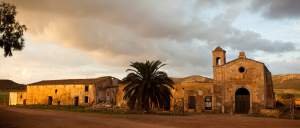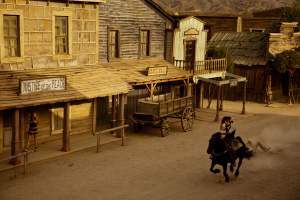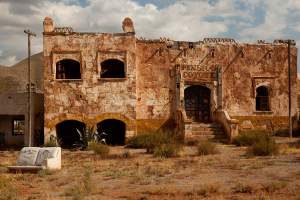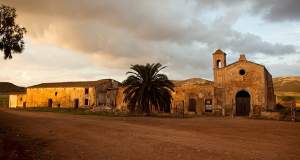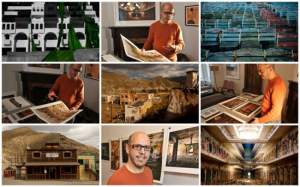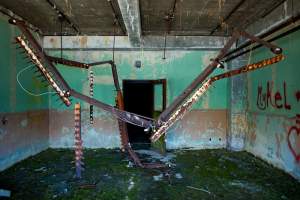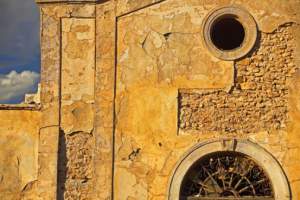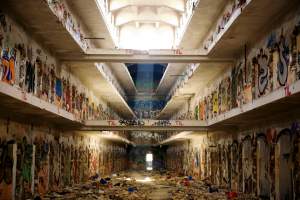Archives
125 Years of Federico García Lorca
Federico García Lorca was born in 1898, and earlier this year marked the 125th anniversary of his birth. When he was 30 years old, Spanish newspapers covered a sensational story from a remote corner of Andalucia. Twenty six year old bride Francisca Cañadas Morales was due to marry a local farmer. hours before the wedding she eloped with her cousin Francisco Montes Cañadas, with whom she had been in love since childhood. But before they could get away, the groom’s brother shot and killed Francisco. The episode became famous throughout the country as ‘el crimen de Níjar’ and served as […]
Read MoreCoverage of “Once Upon a Time in Almería” in the Daily Mail
This week the Daily Mail published a feature article on my photo project documenting the legacy of Hollywood and international filmmaking in Almeria, Spain. Here is one excerpt from the interview published in the article: ‘The Western towns built by Sergio Leone and others were not meant to be accurate representations of the American West. Instead, they were constructed to meet filmmakers’ vision of what the American West was like. ‘The Spaghetti Western has been described as a myth of a myth, because it is one step further removed from the myth of the original Hollywood Westerns. ‘However, this myth […]
Read MoreEight Lives of El Condor 1
The camera is usually shooting out from the hillside, looking down over the installation. The sun sets behind the hillside, so the few glimpses in that direction are somewhat obscured by the glare of sunlight. One of the most intriguing locations in Almeria is the site of an elaborate fortress originally constructed in 1969 for the film El Condor. Adobe houses, horse stables, an elevated water tank, and a luxurious two story stone house surrounded a central plaza the size of a soccer field. The entire complex was circled by 30 foot walls with a network of watchtowers and stairways. […]
Read MoreConstellation Theater’s Blood Wedding
Constellation Theater‘s Blood Wedding opens this weekend at Source theater on 14th Street! The lobby will include a few of my photographs of the Cortijo del Fraile, the site of the real-life tragedy that inspired Lorca’s play. The image above was taken last November, showing the current state of the old cortijo. Lovers are torn apart as two families in rural Spain are intricately bound in an unbreakable cycle of murder and revenge. Experience passion and violence mixed with song and ceremony. Federico García Lorca illuminates our deepest desires with gorgeous poetic imagery and the haunting appearance of a human […]
Read MoreNYT: Spain’s Building Spree Leaves Some Airports and Roads Begging to Be Used
MADRID – In March, local officials inaugurated a new airport in Castellón, a small city on Spain’s Mediterranean coast. They are still waiting for the first scheduled flight. To justify the grand opening, Carlos Fabra, the head of Castellón’s provincial government, argued that it was a unique opportunity to turn an airport into a tourist attraction, giving visitors full access to the runway and other areas normally off-limits. This Sunday, it will be used as the starting point for part of Spain’s national cycling championships, featuring the three-time Tour de France champion Alberto Contador. http://mobile.nytimes.com/article?a=808391&f=111 Sent via BlackBerry from T-Mobile
Read MoreAbandoned Architecture: Borderstan Profile
Local DC blog Borderstan posted a thoughtful profile on my photographs of abandoned architecture. They’ve offered great coverage of artists in the mid city area in recent weeks, showcasing the diversity of artists in the neighborhood.
Read MoreBuckner Building, Whittier, Alaska
Following World War II, the town of Whittier, Alaska, became the site for a major military installation. The Buckner Building, an enormous complex built in 1953, housed most of the population and included, under one roof, a theater, industrial kitchens, and medical clinics and laboratories. The complex was isolated from the outside world, accessible only by boat or airplane. Today the Buckner building is still standing. The presence of asbestos has thwarted efforts to demolish it. The site is easily accessible and has become a hangout for local youth and grafitti artists. However, its condition is rapidly deteriorating due […]
Read MoreThe Icon
Less than two years ago, in December 2008, condo mogul Jorge Pérez unveiled his $1.3 billion self-proclaimed “legacy,” the ICON Brickell in downtown Miami. With 1650 residences and a 150 room boutique hotel in three 50-story towers, it is Florida’s largest condominium development. The complex features “signature designs” by Yoo and “inspired by” Philippe Starck, including a unique entryway “envisioned by Starck as a dark cave illuminated by light emitted from the watchful “eyes” of mammoth columns” shaped like carved human faces. Marketing materials also promised a 28,000 square-foot state-of-the-art spa, a two-acre terrace and pool deck […]
Read MorePreserving the Cortijo del Fraile
Federico Garcia Lorca’s drama Blood Wedding was inpsired by a true story that appeared in a Spanish newspaper in 1928. A bride-to-be ran off with another man (her cousin) the night before the wedding, but the groom’s brother discovered the couple and shot and killed the lover. The bride-to-be lived on a farm known as El Fraile. Over 75 years later, the ruins of the farm remain in the remote countryside of Nijar in Almeria, accessible only by a poorly marked, unpaved road. The site also appeared in Sergio Leone’s 1966 film The Good, The Bad and The Ugly, starring […]
Read MoreCárcel de Carabanchel 2
The Carabanchel prison in Madrid is one of the most infamous architectural landmarks from Spain’s decades of dictatorship. General Francisco Franco ordered construction of the prison in the 1940s to house the regime’s many political prisoners. The complex is designed on the panopticon model, with the cell blocks extending outwards from a round central tower. This arrangement, first proposed by 17th century philosopher Jeremy Bentham, allowed guards to easily observe all areas of the prison and was intended to amplify the prisoners’ sensations of powerlessness. Carabanchel was finally closed in 1998 and its few remaining inhabitants moved to other […]
Read More